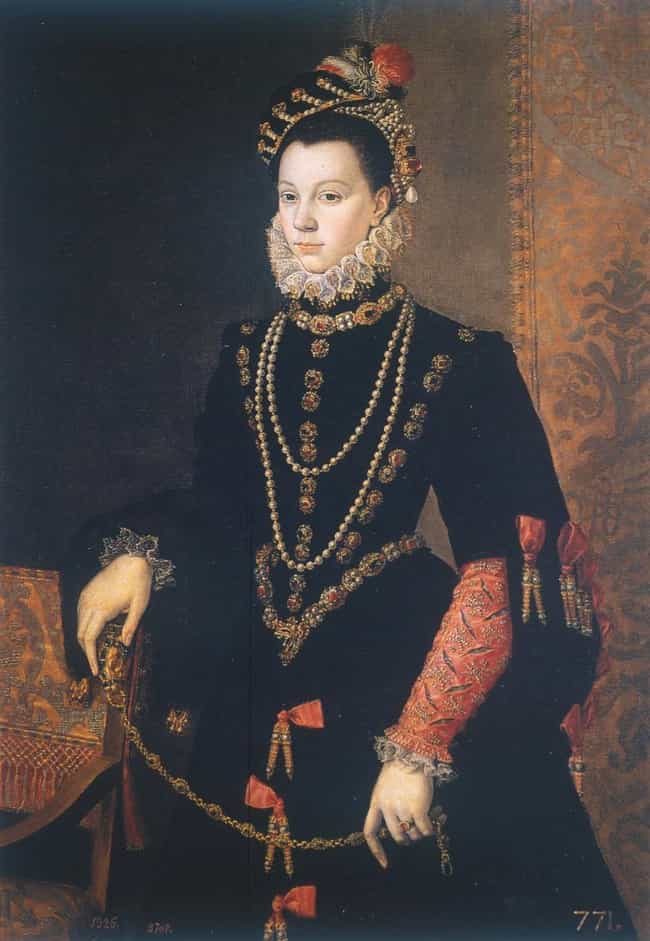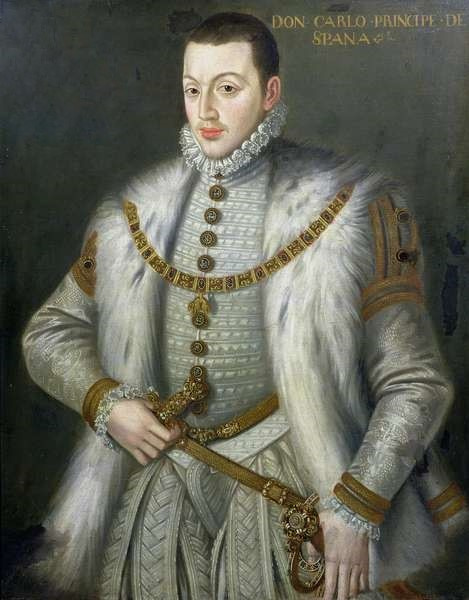Diana Mantuana, better known as Diana Scultori, was an engraver and print maker from Mantua, Italy. In fact, Diana is one of the earliest known female engravers. She came from a family of engravers. Her father, Giovanni Battista Ghisi, was a painter, sculptor and engraver. Her brother Adamo Scultori was also an engraver and painter.
 With so many of these artists I find my self needing to be educated on the medium in which they practiced. I learned about enameling when I was studying Suzanne de Court. Now, I've found that I need an education on engraving. In the 16th century engraving was done by first etching the design onto copper plates. Then the artist used a burin, or graver, to cut thin furrows in the plates surface. The burin was a prism shaped bar of hardened steel with a sharp point and wooden handle. This was pushed across the surface of the plate away from the artist, the palm was used to push the burin and it was guided by the thumb and forefinger. When the image was complete ink would be applied to the surface of the plate, and the excess wiped away, leaving ink in the furrows. The plate was then pressed onto paper.
With so many of these artists I find my self needing to be educated on the medium in which they practiced. I learned about enameling when I was studying Suzanne de Court. Now, I've found that I need an education on engraving. In the 16th century engraving was done by first etching the design onto copper plates. Then the artist used a burin, or graver, to cut thin furrows in the plates surface. The burin was a prism shaped bar of hardened steel with a sharp point and wooden handle. This was pushed across the surface of the plate away from the artist, the palm was used to push the burin and it was guided by the thumb and forefinger. When the image was complete ink would be applied to the surface of the plate, and the excess wiped away, leaving ink in the furrows. The plate was then pressed onto paper.Historians can't quite agree on when Diana was born; some say as early as 1532 and as late as 1547. What is known is that she met the architect, Francesco da Volterra (also known as Francesco Capriani) in 1565 when he moved to Mantua. The pair married soon thereafter and traveled to Rome by 1575.
In that same year Diana applied for and received the Papal Privilege to make and market her own work. It was rare for a woman to receive a Papal Privilege; it meant that Diana could establish a name for her household, and to sign her work. The privilege gave Diana a way to protect her engravings from being copied and then sold “by others of either sex, but most especially book dealers, sculptors, engravers and printers”. If her work was published without her consent a heavy fine was levied against the offender. One third of the fine would go to the Pope, one third to Diana, and the final third to the judge who issued the decision. This would naturally encourage a judgment in favor of the artist. In addition to such a fine, the punishment also included immediate excommunication from the Catholic Church.
 Having the Papal Privilege was a good indication of Diana's business acumen. It's clear to me that Diana learned not just her craft from her father, but also how to run a business. She learned from Giovanni that courting patrons was critical to the success of the family business. She used that knowledge when she and Francesco moved to Rome. Diana's artwork promoted her husband as an architect. Diana also retained ownership of her plates which allow her to reprint and have an ongoing source for income. As the years passed the couple became successful. The husband-and-wife artists were admitted to the Congregazione dei Virtuosi del Pantheon - the Pontifical Academy of Fine Arts and Letters. To mark the occasion a pair of medallions were created bearing the likenesses of Diana and Francesco.
Having the Papal Privilege was a good indication of Diana's business acumen. It's clear to me that Diana learned not just her craft from her father, but also how to run a business. She learned from Giovanni that courting patrons was critical to the success of the family business. She used that knowledge when she and Francesco moved to Rome. Diana's artwork promoted her husband as an architect. Diana also retained ownership of her plates which allow her to reprint and have an ongoing source for income. As the years passed the couple became successful. The husband-and-wife artists were admitted to the Congregazione dei Virtuosi del Pantheon - the Pontifical Academy of Fine Arts and Letters. To mark the occasion a pair of medallions were created bearing the likenesses of Diana and Francesco.Diana made the acquaintance of Giorgio Vasari when she was about 19 years old and he recorded the following in his journal:
"All in all, from what I saw last time I was in Mantua to this year, 1566, when I returned, the city is so much more ornamented and more beautiful that, if I had not seen it, I would not have believed it. What is more, the number of artisans has multiplied and keeps on multiplying. Inasmuch as this, to Giovanni Battista Mantovano (engraver of prints and excellent sculptor, whose story I related in the Lives of Giulio Romano and Marcantonio Bolognese) there were born two sons who engrave copper plates divinely, and what is more marvelous, a daughter named Diana also engraves so well that it is a wonderful thing: and when I saw her, a very well-bred and charming young lady, and her works, which are most beautiful, I was stunned."
One of the most striking characteristics in Diana's work is the attention to fine detail. Unlike oil painting, or even drawing, the engraver has to rely on a series of fine lines to create features and shadows. There would be no relying on different tones and values to create the work, only fine lines. Another interesting aspect to her work is the use of nudes or partially draped figures. At a time when women were generally not allowed to work with male models, seeing these figures in Diana's engravings is quite intriguing. On further study it is reveled that Diana would base her work on that of other artists.
Diana's contributions to the art showed what printmaking could become. She used her skill to make headway into the world of book publishing and thus established herself a a woman of letters. In a time when some considered engraving simply copy work, Diana was able to help elevate engraving to an art form.
+++++++++++++++++++++++++++++++++++++
Selected Sources
Lincoln, Evelyn (1 January 1997). "Making a Good Impression: Diana Mantuana's Printmaking Career". Renaissance Quarterly.
Letwin, Hilary "Old in Substance and New in Manner": The Scultori and Ghisi Engraving Enterprise in Sixteenth-Century Mantua and Beyond.
History of Science: Engraving. (October 2019) https://www.hsm.ox.ac.uk/engraving
Steve Bartrick Antique Prints and Maps.(October 2019) https://www.antiqueprints.com/Info/engraving.php
RISD Museum. Diana Mantuana, Renaissance engraver. (October 2019) https://risdmuseum.org/manual/292_diana_mantuana_renaissance_engraver
Museum:Remix. Diana Scultori. https://museumremix.wordpress.com/2015/07/22/diana-scultori-gallery-2-rome-and-the-papal-privilege/ (October 2019)








